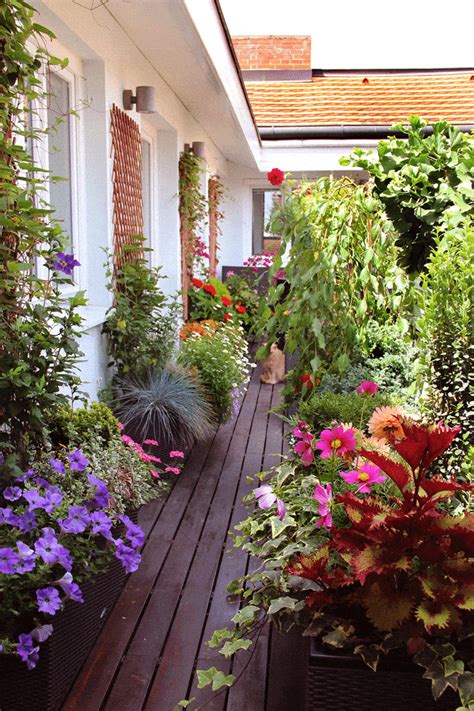Top Plant Pairings to Maximize Your Balcony Garden’s Health and Aesthetic
Your balcony garden is more than just a collection of plants; it’s an opportunity to create a thriving ecosystem through companion planting. By choosing the right plant pairings, you can enhance plant growth, deter pests, and improve the overall health of your urban garden. This guide delves deep into strategies for pairing plants in a small space while ensuring your garden is both functional and visually appealing.
Introduction
Companion planting is a technique that involves placing plants together that benefit one another in terms of growth, pest control, and nutrient exchange. In a limited space like a balcony, smart pairings are essential to making the most out of your available area while promoting plant health. This article explores practical and visually appealing gardening tips for container gardening on a balcony. Whether you’re a beginner or an experienced gardener, these strategies will help you create an efficient, beautiful, and healthy garden.
Key Concepts
- Companion Planting: Growing plants that benefit each other in proximity.
- Urban Gardening: Gardening in small, often confined spaces like balconies.
- Container Gardening: Growing plants in containers rather than directly in the ground, a necessity for balconies.
- Plant Health: The state of plants being free from diseases, pests, and nutrient deficiencies, which can be influenced by companion planting.
Historical Context
The concept of companion planting dates back centuries. Native American tribes, such as the Iroquois, used the “Three Sisters” method, planting corn, beans, and squash together because they supported each other’s growth. Over time, this ancient knowledge has evolved into modern techniques for urban spaces like balcony gardens, where space is limited but the desire for productivity remains high.
Current State Analysis
In today’s urban environments, balcony gardens have become popular for those who want to enjoy the benefits of gardening without a yard. However, these small spaces present challenges in terms of managing sunlight, soil quality, and plant growth. Many urban gardeners are now turning to companion planting as a solution to maximize space efficiency while maintaining plant health. While traditional gardening spaces offer more room for experimentation, container gardening on a balcony requires careful planning and understanding of each plant’s needs.
Practical Applications
For balcony gardeners, the key to success lies in smart plant pairings. Below are a few recommended combinations:
- Tomatoes and Basil: Basil repels pests that commonly affect tomatoes and can enhance the flavor of the fruit.
- Carrots and Chives: Chives help improve carrot health by deterring carrot flies and enhancing flavor.
- Marigolds and Vegetables: Marigolds repel nematodes and other pests while adding a splash of color to your garden.
- Beans and Spinach: Beans fix nitrogen into the soil, which benefits leafy greens like spinach.
- Lavender and Lettuce: Lavender deters pests and its fragrance enhances your balcony’s outdoor decor.
Case Studies
| Plant Pairing | Benefits | Real-World Example |
|---|---|---|
| Tomatoes and Basil | Increased pest resistance, flavor enhancement | A New York balcony gardener found that adding basil around her tomatoes led to fewer aphid infestations and richer tasting tomatoes. |
| Beans and Spinach | Nitrogen fixation, better growth for spinach | A Toronto-based urban gardener reported that her spinach grew faster and healthier when paired with nitrogen-fixing beans in shared containers. |
| Marigolds and Vegetables | Pest deterrence, soil improvement | A Los Angeles gardener discovered fewer nematode problems in her pepper plants after incorporating marigolds into her garden design. |
Stakeholder Analysis
The stakeholders in balcony gardening are vast. From the urban gardeners who need functional, beautiful outdoor spaces to environmental groups advocating for sustainable, pesticide-free gardening, companion planting satisfies a wide range of interests. Balcony gardens can also serve as educational spaces for children and neighbors, fostering community engagement in urban settings. Landscape designers also have a stake in integrating plant health and aesthetics for small spaces.
Implementation Guidelines
Here’s how to implement successful companion planting in your balcony garden:
- Choose the Right Plants: Focus on plants that not only thrive in containers but also support each other in terms of pest control and nutrient sharing.
- Ensure Proper Sunlight: Make sure that plants with similar light needs are grouped together. Tall plants like tomatoes should not overshadow sun-loving herbs.
- Use High-Quality Soil: Companion plants often share containers, so ensuring the soil has adequate nutrients is essential. Consider organic fertilizers.
- Rotate Crops: Even in small gardens, rotating crops can prevent the buildup of pests and diseases.
Ethical Considerations
Urban gardening, particularly in small spaces like balconies, can raise ethical concerns. Avoiding synthetic pesticides in favor of natural pest deterrents like companion plants is better for the environment. Additionally, using organic soil and supporting local plant nurseries ensures sustainable practices. It’s also essential to consider water conservation strategies, such as using self-watering pots or drought-tolerant plant pairings.
Limitations and Future Research
Despite the advantages of companion planting in a balcony garden, there are limitations. The confined space limits the number of possible pairings, and certain combinations may not thrive due to microclimates created by tall buildings or restricted airflow. Future research could explore innovative plant pairings for urban environments, including the use of technology like soil sensors and automated watering systems to support plant health. Studies on the long-term benefits of urban balcony gardens in terms of mental health and community engagement could also provide valuable insights.
Expert Commentary
“Companion planting is not just about optimizing space—it’s about creating harmony in the garden. When done correctly, it can improve plant health, reduce the need for chemical inputs, and even enhance the aesthetic appeal of your balcony. However, success depends on understanding the unique microenvironment of your urban space. With careful planning, a small garden can have big benefits.” – Dr. Jane Perkins, Urban Horticulturist
“The future of urban gardening lies in creative, eco-friendly solutions like companion planting. Not only does this method encourage biodiversity, but it also contributes to sustainable living, even in the most compact of spaces.” – Sam Richards, Sustainable Agriculture Expert


